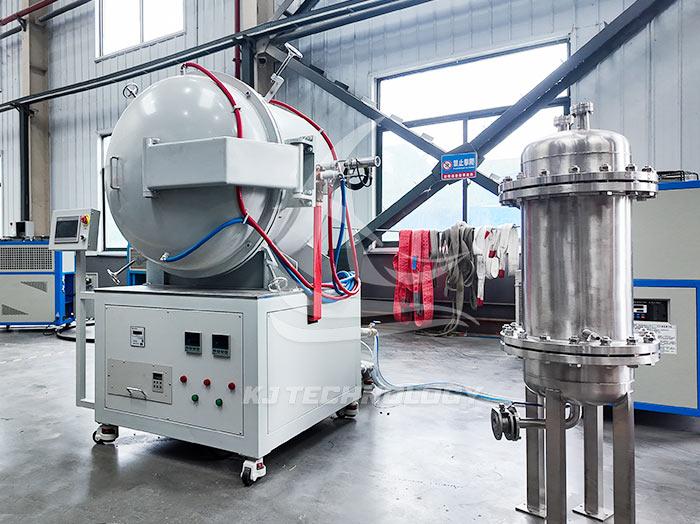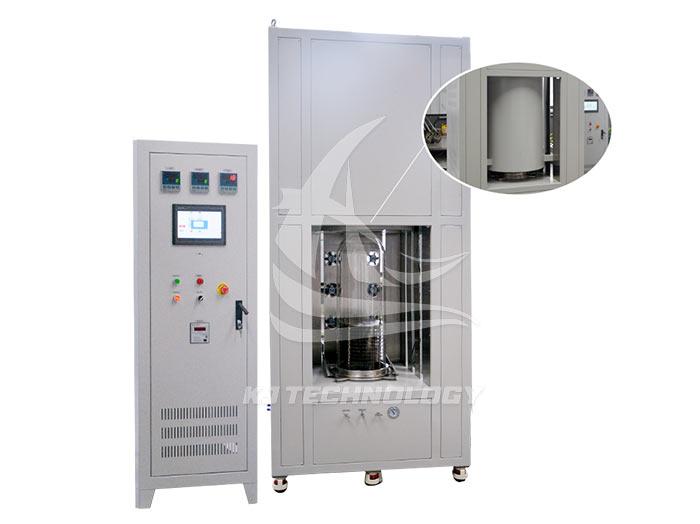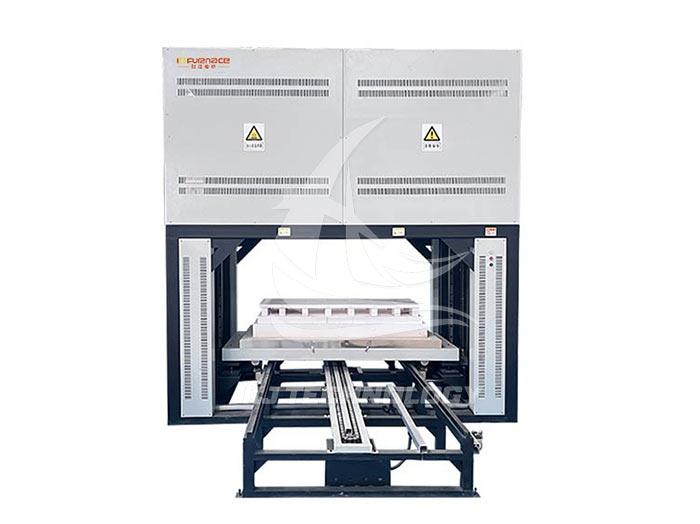What carbon materials can be burned in a vertical graphite carbon tube vacuum furnace?
 10-17-2025 Author: KJ technology
10-17-2025 Author: KJ technology
The vertical graphite carbon tube vacuum furnace, with its high temperature heating capacity, vacuum environment control, and inert/active atmosphere support, can sinter various carbon materials, as follows:
1. Carbon/Carbon Composite Materials
Application scenario: Carbon/carbon composite materials are composed of carbon fiber reinforced carbon matrix, which has high strength, high modulus, high temperature resistance and thermal shock resistance. They are widely used in aerospace (such as brake discs, rocket nozzles), automotive industry (such as high-performance brake pads) and other fields.
Sintering principle: In a vacuum or inert atmosphere (such as argon), high temperature (usually 1500 ℃ -2000 ℃) is used to bond carbon fibers with the carbon matrix interface, eliminate pores, and improve material density and mechanical properties.
Equipment advantages: The graphite carbon tube heating element provides a uniform high-temperature field, and the vacuum environment avoids oxidation, ensuring stable performance of the composite material.
2. Carbon fiber insulation material
Application scenario: Carbon fiber insulation materials (such as carbon felt and graphite felt) are used as insulation layers for high-temperature industrial furnaces, with low thermal conductivity, high temperature resistance, and corrosion resistance, which can reduce energy consumption.
Sintering principle: High temperature treatment of carbon fibers under vacuum to remove volatile impurities, optimize fiber arrangement structure, and enhance thermal insulation performance.
Equipment advantages: The vacuum environment prevents fiber oxidation, and the graphite carbon tube heating element ensures uniform insulation, avoiding local overheating and material performance degradation.
3. High thermal conductivity graphite film
Application scenario: High thermal conductivity graphite film is used for heat dissipation in electronic devices (such as mobile phones and laptops), with high thermal conductivity, low density, and flexibility.
Sintering principle: In a vacuum or inert atmosphere, graphene layers are rearranged at high temperatures (usually above 2000 ℃) to reduce defects and improve thermal conductivity.
Equipment advantages: The graphite carbon tube heating element provides an ultra-high temperature field, and the vacuum environment avoids graphite oxidation, ensuring the quality of the film layer.
4. Nano carbon materials (such as carbon nanotubes, graphene)
Application scenarios: Carbon nanotubes are used to enhance composite materials and battery electrodes; Graphene is used for transparent conductive films, sensors, etc.
Sintering principle: In a vacuum or reducing atmosphere (such as hydrogen), surface impurities of nanomaterials are removed through high-temperature treatment, optimizing the structure and improving performance.
Equipment advantages: The vacuum environment prevents the aggregation of nanomaterials, the graphite carbon tube heating element provides precise temperature control, and supports reactive atmosphere reactions.
5. Silicon carbide (SiC) ceramic matrix composite material
Application scenario: Silicon carbide ceramic matrix composite materials are used for nuclear reactor structural components, aerospace hot end components, with high strength, radiation resistance, and thermal shock resistance.
Sintering principle: In a vacuum or inert atmosphere, high temperature (usually 1800 ℃ -2200 ℃) is used to bond the interfaces of silicon carbide particles, eliminate pores, and improve material density.
Equipment advantages: The graphite carbon tube heating element supports ultra-high temperature sintering, and the vacuum environment prevents silicon carbide oxidation, ensuring material performance.








